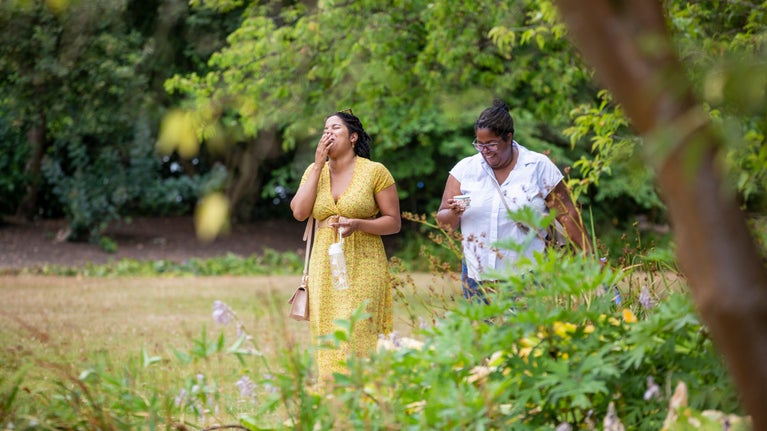
Become a member
Join today and help protect nature, beauty and history – for everyone, for ever. Enjoy access to more than 500 places with National Trust membership.
Cherhill Down, with a chalk white horse, Iron Age hillfort and obelisk has breath-taking views over the wildlife haven of Calstone coombes.
South of Cherhill village, Near Calne, Wiltshire

| Asset | Opening time |
|---|---|
| Countryside | Dawn - Dusk |
Paths are unsurfaced, rutted and uneven, can be muddy and slippery after rain. Very steep path by the white horse.
South of A4; 3 miles east of Calne, near the village of Cherhill.
Parking: Roadside parking is available on A4 (not National Trust)
Sat Nav: SN11 8UY is the closest postcode, taking you to the eastern end of Cherhill village
Various footpaths lead to Calstone and Cherhill Downs from the A4 in and around Cherhill village. Wessex Ridgeway and White Horse Trail run through the property. Lansdowne Monument is about ¾ mile from Cherhill village
Chippenham 9 miles
No 42 bus, Calne to Marlborough, stops on A4 in Cherhill
National Cycle Network Route 403 runs through Cherhill to the north. See Sustrans website
South of Cherhill village, Near Calne, Wiltshire
Oldbury Castle hillfort, dating to the Iron Age with evidence of earlier Bronze Age use.
Lansdowne Monument is a landmark for miles around. Built in 1845, by the 3rd Marquis of Lansdowne.
Cherhill White Horse can be seen for miles around. Made in 1870, it is one of eight in Wiltshire (not National Trust).
Chalk downland, with colourful displays of wild flowers and home to some rare butterflies and insects.

Cherhill Down can be identified by the chalk white horse and the Lansdowne Monument. Calstone Down is tucked behind, a perfect habitat for birds, insects and flowers.

Amazing views, through rolling downland, wild flowers and rare insect life with plenty of historical interest – this walk has a bit of everything.

In the centre of Lacock village, this 15th-century cottage is packed full of charm and makes a cosy base for exploring Lacock Abbey and the countryside nearby.

A simple cottage for two, in the heart of Avebury’s prehistoric ramparts and stone circles.
Sorry, there are no upcoming events at this place
Cherhill Down is well known for its White Horse and views of the Lansdowne Monument, which can be seen for miles around.
Walk to the top and you'll be rewarded with great views. In the summer enjoy carpets of chalk grassland flowers and the sound of skylarks.
Take time to explore the impressive landmark of Oldbury Castle Iron Age hill fort, which also provides shelter for butterflies. Or simply enjoy the feeling of peace and tranquillity in the Calstone Coombes, a haven for some of the rarest insect species in Wiltshire and one of the very few sites in the UK where the Wart-biter bush cricket lives.

National Trust ranger Keith Steggall talks about the careful balance between landscape management, species monitoring and visitor experience in the chalk grassland habitat of Calstone and Cherhill Downs.

Search for live volunteering opportunities, or register your interest with Calstone and Cherhill Downs.

Join today and help protect nature, beauty and history – for everyone, for ever. Enjoy access to more than 500 places with National Trust membership.
By sharing your email address you’re agreeing to receive marketing emails from the National Trust and confirm you’re 18 years old or over. Please see our for more information on how we look after your personal data.